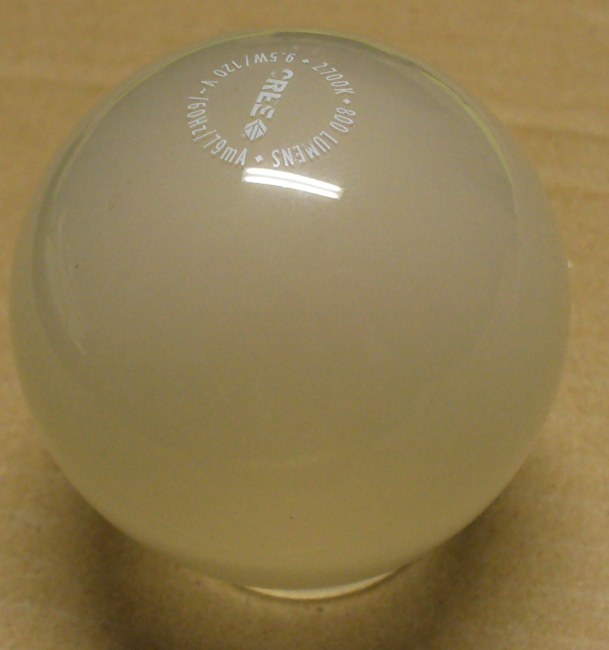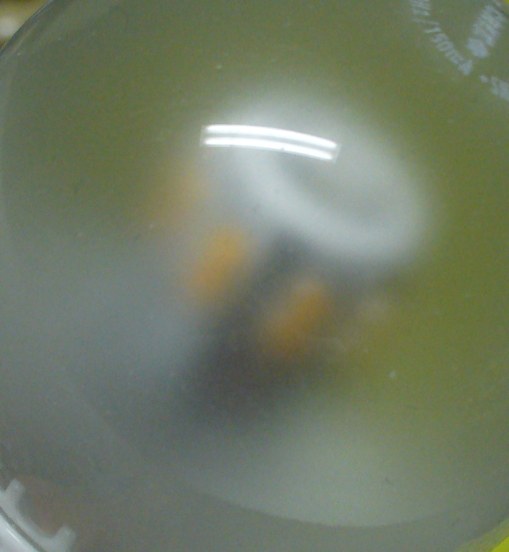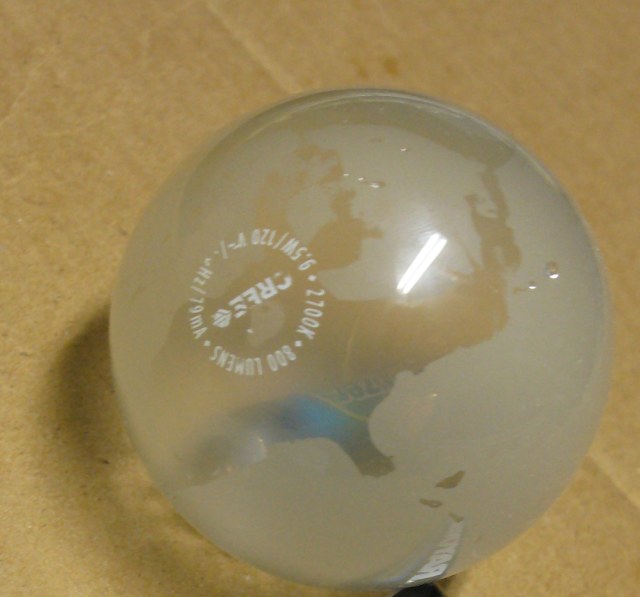This is the glass globe from a 60W equivalent CREE brand LED light bulb. The silicone has been peeled off from the outside. The diffusing frost is from internal roughened glass surface.

I noticed that some of them become unfrosted. This behavior has also been noted by a few users here.
This is my CREE A21 100W equivalent 18W 1,600 lumen with a failed diffuser. It seems like an aesthetic only issue, but it is not. It results in diminished diffuser efficiency and increased glare in applications where the bulb is visible to the eyes. As you can see here, condensation of organic vapor from offgassing makes it clear enough to make out the LED emitters. It's a cause of concern for damage to LEDs and loss of output over the long run according to this report. http://www.lrc.rpi.edu/resources/newsroom/pdf/2012-2013/LED-VOCs8511.pdf
The fins along along the bottom gets up to about 200°F even in a totally open install. The heat causes something to outgas and condense onto the internal surface of the glass.

Just to prove my theory, I wetted the inside of the globe in the first picture with a bit of water. The effect of liquid on diffusing effect of frosted glass is devastating.


I noticed that some of them become unfrosted. This behavior has also been noted by a few users here.
This is my CREE A21 100W equivalent 18W 1,600 lumen with a failed diffuser. It seems like an aesthetic only issue, but it is not. It results in diminished diffuser efficiency and increased glare in applications where the bulb is visible to the eyes. As you can see here, condensation of organic vapor from offgassing makes it clear enough to make out the LED emitters. It's a cause of concern for damage to LEDs and loss of output over the long run according to this report. http://www.lrc.rpi.edu/resources/newsroom/pdf/2012-2013/LED-VOCs8511.pdf
The fins along along the bottom gets up to about 200°F even in a totally open install. The heat causes something to outgas and condense onto the internal surface of the glass.

Just to prove my theory, I wetted the inside of the globe in the first picture with a bit of water. The effect of liquid on diffusing effect of frosted glass is devastating.

Last edited:

